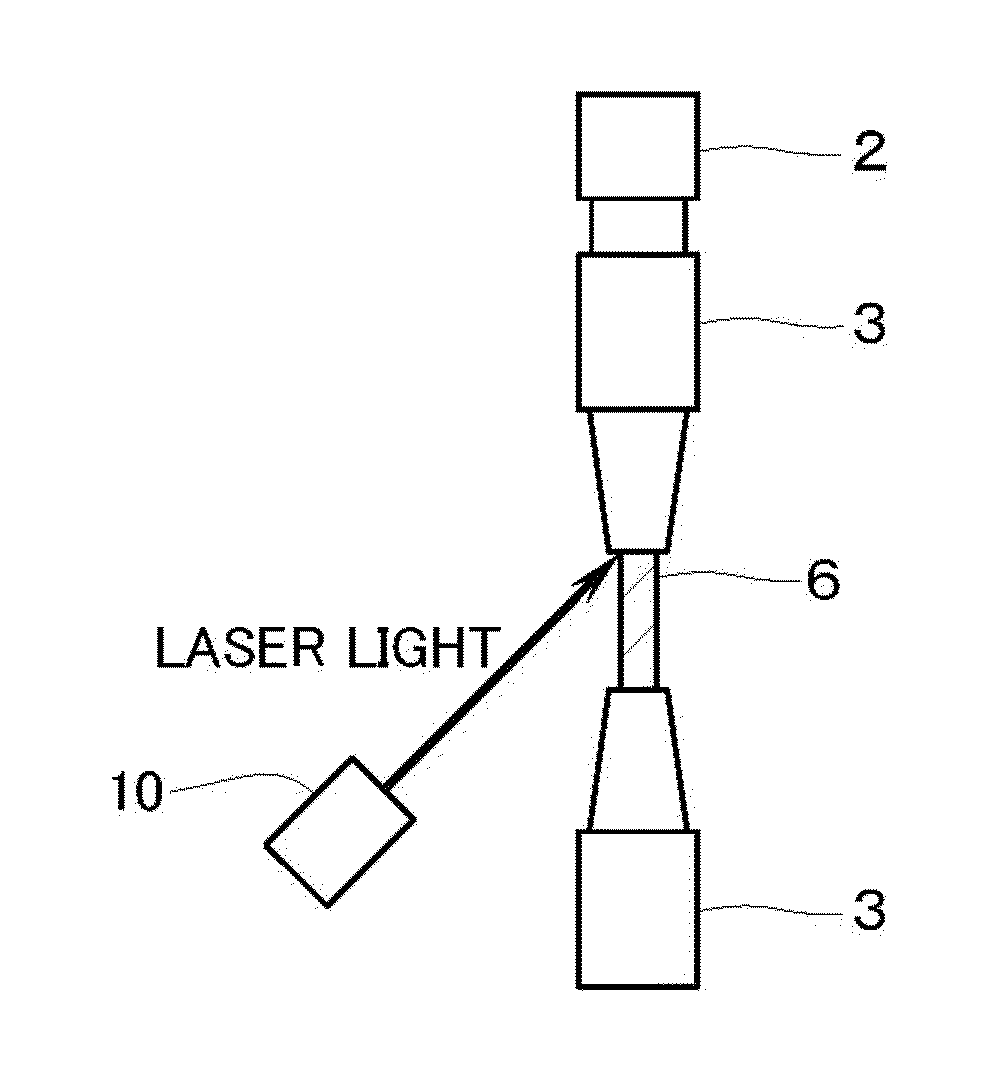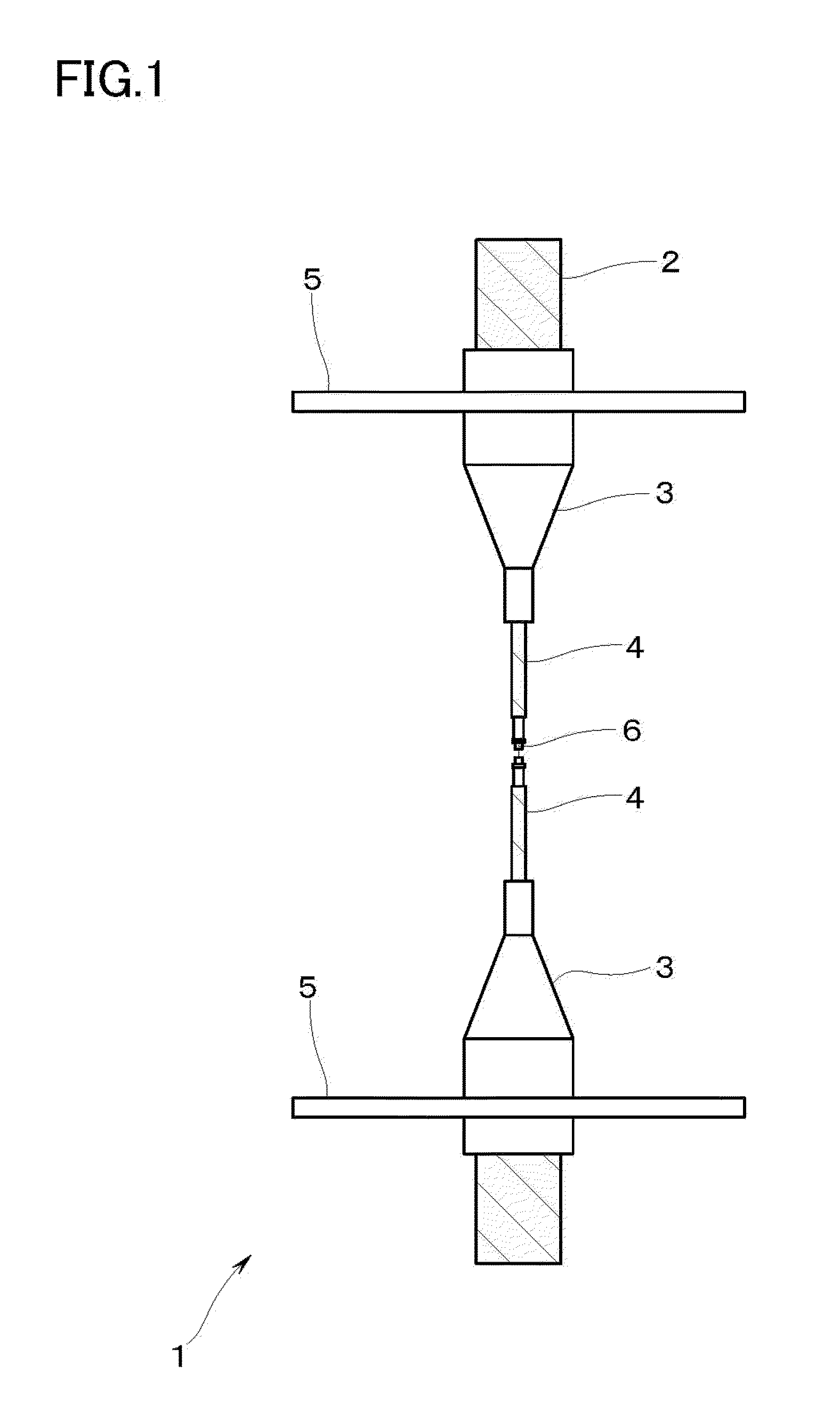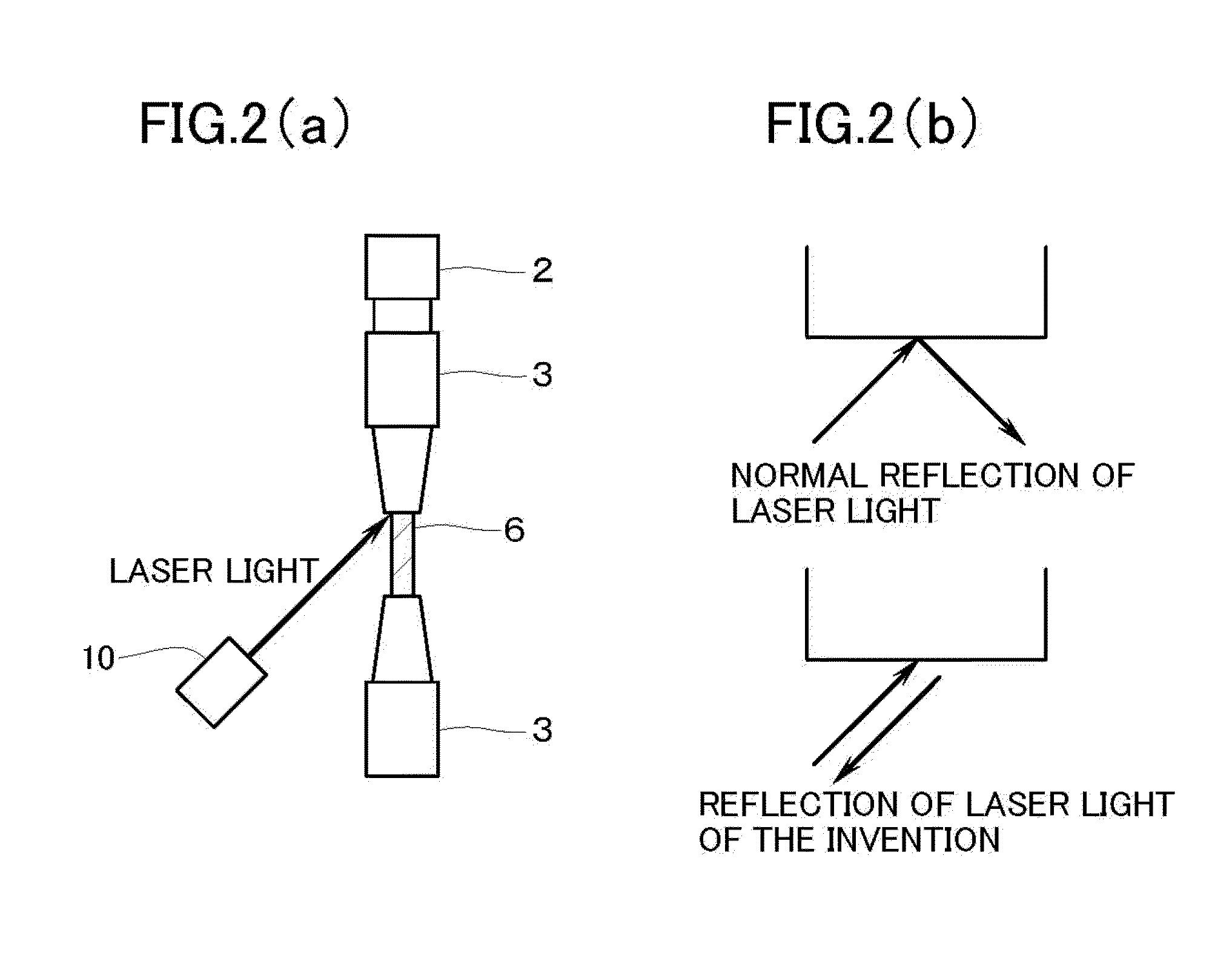Method for ultrasonic fatigue testing at high temperature, and testing device
a testing device and ultrasonic technology, applied in the direction of fluid tightness measurement, instruments, structural/machine measurement, etc., can solve the problems of many problems to be solved
- Summary
- Abstract
- Description
- Claims
- Application Information
AI Technical Summary
Benefits of technology
Problems solved by technology
Method used
Image
Examples
example 1
[0100]Temperature dependency of Young's modulus was linearly approximated. Convergent calculation was performed using Young's modulus measured at room temperature and the L2 value measured at the test temperature, and temperature dependency of Young's modulus was obtained. Numerical calculation was performed using the Runge-Kutta's formula.
[0101]FIG. 6 shows a display screen of produced stress calculation software. This inverse calculation function of Young's modulus is incorporated.
[0102]FIG. 7 shows the result of comparison between obtained Young's modulus and a literature value of Young's modulus of a material similar in component, microstructure, and strength.
[0103]Although (a) shows the results obtained for 12Cr-2W steel, this tends to well match the literature value reported for ASME T91 steel.
[0104]Although the result of this example tends to be higher at near 600° C., this is considered because, while 2% of tungsten (W) is added to the material measured in this example, and ...
example 2
[0107]The device of the invention shown in FIG. 1 having the rods and the horns attached to both ends of the test specimen was used.
[0108]A mode of a temperature distribution measurement in the configuration in which the rods and the horns are attached to both ends of the test specimen is shown in FIG. 8, and a measurement result is shown in Table 1.
[0109]Although Nos. 5 and 7 of FIG. 8 correspond to the temperature at the leading end of the rod, since both are substantially matched in temperature, it can be confirmed that the temperature distribution is symmetrical in the vertical direction.
[0110]Although the temperature at a position closest to the vibrator corresponds to No. 10, since the temperature of No. 10 is substantially about 30° C. even if heating at about 1000° C. is performed, it can be confirmed that sufficient heat insulation is obtained in the device configuration of this example.
[0111]The temperature distribution reaches a stationary state by heating for about two h...
example 3
[0113]FIG. 9 shows the result of comparison between end surface displacement measured by the configuration of FIGS. 1 to 3 and end surface displacement measured using a normal free end.
[0114]Here, laser light was irradiated from a direction of 35° with respect to the horizontal direction, and a chamfered part (FIG. 3(d)) of 35° was provided in the horn (in this case, the rod) so as to be perpendicular with respect to the horn.
[0115]As will be apparent from FIG. 9, the measurement result of the invention well matches the measurement result by the normal method. That is, validity of the end surface displacement measurement of the invention was confirmed.
PUM
| Property | Measurement | Unit |
|---|---|---|
| heat resistance | aaaaa | aaaaa |
| temperature | aaaaa | aaaaa |
| diameter | aaaaa | aaaaa |
Abstract
Description
Claims
Application Information
 Login to View More
Login to View More - R&D
- Intellectual Property
- Life Sciences
- Materials
- Tech Scout
- Unparalleled Data Quality
- Higher Quality Content
- 60% Fewer Hallucinations
Browse by: Latest US Patents, China's latest patents, Technical Efficacy Thesaurus, Application Domain, Technology Topic, Popular Technical Reports.
© 2025 PatSnap. All rights reserved.Legal|Privacy policy|Modern Slavery Act Transparency Statement|Sitemap|About US| Contact US: help@patsnap.com



